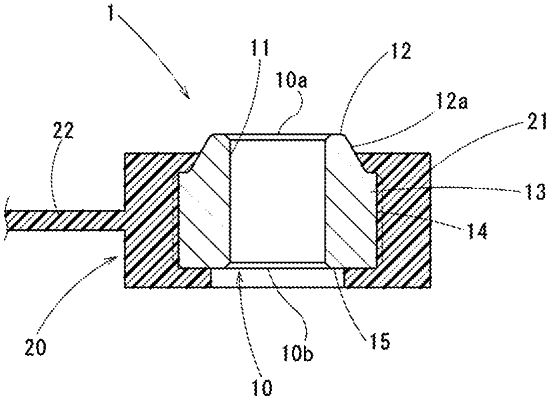| CPC B29C 45/1459 (2013.01) [B22F 5/10 (2013.01); B22F 7/08 (2013.01); B29C 45/14065 (2013.01); B29C 45/26 (2013.01); B29C 45/2616 (2013.01); F16C 33/145 (2013.01); B29K 2705/00 (2013.01); B29L 2031/04 (2013.01)] | 6 Claims |

|
1. A method of manufacturing an insert sintered part comprising:
a sintered part-forming step of forming a sintered part having a first end part and a second end part by powder molding; and
an insert-molding step of forming an insert sintered part in which an exterior part is integrated into an outer peripheral part of the sintered part, wherein
a forming die used in the insert-molding step includes a fixed die and a movable die, wherein there is a parting surface along which the fixed die and the movable die abut each other,
the insert-molding step has:
a die-clamping step in which the sintered part is held between the fixed die and the movable die, the movable die is moved along the parting surface, and the sintered part is pressed against the fixed die by the movable die to form a cavity around the sintered part such that said forming die covers a region of the sintered part with a gap except for a portion where the first end part abuts the fixed die and a portion where the second part abuts the movable die; and
a filling step of filling the cavity with a melted material being formed into the exterior part after the die-clamping step, and
the parting surface is formed along a movement direction of the movable die in the die-clamping step.
|